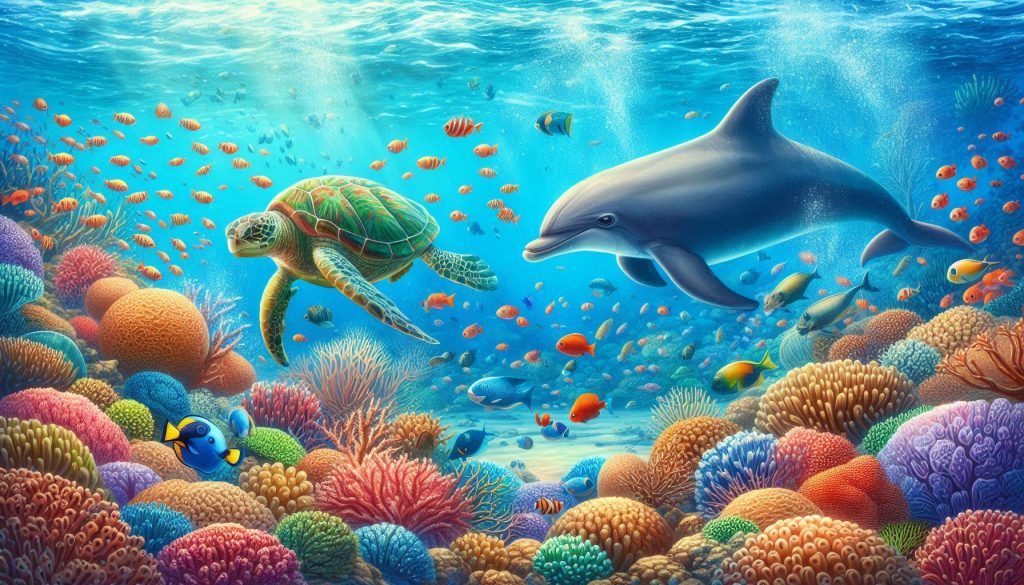Water (Oceans) – Complete Guide For Class 11 Geography Chapter 12

Welcome to iPrep, your Learning Super App. Our learning resources for the chapter “Water (oceans)” in Geography for Class 11th are designed to ensure that you grasp this concept with clarity and perfection. Whether you’re studying for an upcoming exam or strengthening your concepts, our engaging animated videos, practice questions, and notes offer the best of integrated learning with interesting explanations and examples.
This chapter delves into the intricacies of the world’s oceans, covering topics such as the hydrological cycle, the relief of the ocean floor, temperature distribution, and salinity. It provides a comprehensive overview of these vital aspects of our planet’s water resources.
The oceans, covering approximately 71% of Earth’s surface, are vast bodies of water that play a crucial role in shaping our planet’s climate, supporting marine life, and influencing human activities. This chapter will explore the hydrological cycle, the topography of the ocean floor, the distribution of temperature and salinity, and the significance of these factors in understanding the oceans’ role in our world.
Objectives OF Learning The Chapter – Water (Oceans)
Understanding the purpose of learning Class 11 Geography Chapter 12 named Water (Ocena) sets a strong foundation. Here’s why studying Water (Oceans) is crucial-
- To understand the hydrological cycle and the interconnectedness of water on Earth.
- To explore the different features of the ocean floor, including the continental shelf, slope, deep sea plains, and oceanic trenches.
- To analyze the factors affecting the temperature distribution of ocean waters.
- To examine the horizontal and vertical distribution of salinity in the oceans.
Now let’s explore the various sections of the chapter.
Firstly, to understand the movement of water through the Earth’s systems, let’s delve into the ‘Hydrological Cycle’ section of the chapter Water (Oceans).
The Hydrological Cycle
As we start with the basics of Water (Oceans), let’s dive into the Hydrological Cycle section to understand how water circulates through Earth’s systems. The hydrological cycle is a continuous movement of water between Earth’s surface, atmosphere, and oceans. Here are the main processes involved:
- Evaporation: Water evaporates from the Earth’s surface, primarily from oceans, lakes, and rivers.
- Transpiration: Plants release water vapor into the atmosphere through their leaves.
- Condensation: Water vapor cools and condenses into clouds.
- Precipitation: Water falls back to the Earth’s surface as rain, snow, sleet, or hail.
- Infiltration: Precipitation that falls on land may infiltrate the soil and become groundwater.
- Surface Runoff: Precipitation that does not infiltrate the soil flows over the land surface into rivers, lakes, and oceans.
Now, in order to understand the physical structure of the ocean floor, let’s delve into the ‘Relief of the Ocean Floor’ section of the chapter Water (Oceans).
Relief of the Ocean Floor
The ocean floor is not flat but has a complex topography, influenced by geological processes. It can be divided into several major features:
Divisions of the Ocean Floors
- Continental Shelf: A gently sloping area extending from the coastline to the continental slope. It is rich in marine life and resources.
- Continental Slope: A steep descent from the continental shelf to the deep sea plain.
- Deep Sea Plain: A vast, flat area of the ocean floor covered by sediments.
- Oceanic Deeps: Trenches or deep valleys in the ocean floor, formed by tectonic plate activity.
Minor Relief Features
- Mid-Oceanic Ridges: Submerged mountain ranges formed by volcanic activity along tectonic plate boundaries.
- Seamounts: Isolated underwater mountains that rise from the ocean floor.
- Submarine Canyons: Deep valleys carved into the continental slope by underwater rivers.
- Guyots: Flat-topped seamounts, formed by erosion.
- Atolls: Ring-shaped coral reefs surrounding a central lagoon.

Now, in order to understand the temperature patterns in ocean waters, let’s explore the ‘Temperature of Ocean Waters’ section of the chapter Water (Oceans).
Temperature of Ocean Waters
The temperature of ocean waters varies with latitude, depth, and ocean currents.
Factors Affecting Temperature Distribution
- Latitude: Ocean waters near the equator are generally warmer than those near the poles due to the angle of sunlight.
- Depth: Temperature decreases with increasing depth, as sunlight does not penetrate deep into the ocean.
- Ocean Currents: Warm and cold ocean currents can significantly influence temperature distribution.
Horizontal and Vertical Distribution of Temperature
- Horizontal Distribution: Ocean waters are generally warmer near the equator and cooler near the poles.
- Vertical Distribution: Temperature decreases with depth, forming layers known as thermocline.

Now, in order to understand the salt content in ocean waters, let’s delve into the ‘Salinity of Ocean Waters’ section of the chapter Water (Oceans).
The Salinity of Ocean Waters
Salinity is the concentration of dissolved salts in seawater. It is primarily influenced by evaporation and precipitation.
Horizontal Distribution of Salinity
- Salinity varies with latitude: Higher salinity is found in tropical regions due to high evaporation rates.
- Salinity varies with proximity to land: Areas near land may have lower salinity due to freshwater runoff from rivers and streams.
Vertical Distribution of Salinity
- Halocline: A layer in the ocean where salinity changes rapidly with depth.

Finally, as we have gained comprehensive knowledge about the chapter “Water (Oceans)”, let’s reflect on the overall learning value of this important lesson.
Overall Learning Value of the Chapter
The oceans are vast and complex ecosystems that play a vital role in our planet’s climate and biodiversity. Understanding the hydrological cycle, the topography of the ocean floor, and the distribution of temperature and salinity is essential for appreciating the oceans’ significance and for addressing the challenges associated with their conservation and sustainable use.
Let’s Conclude
In conclusion, the chapter “Water (Oceans)” for Class 11th Geography offers a thorough exploration of the essential elements that define our planet’s vast water bodies. From understanding the hydrological cycle to analyzing the temperature and salinity distributions, this chapter sheds light on how oceans shape the Earth’s climate, influence human activity, and support diverse marine life.
By studying the chapter “Water (Oceans)” for Class 11th, you now have a foundational understanding of the complexities of oceanography and the role oceans play in maintaining ecological balance. This knowledge is invaluable for further studies in Geography and for fostering a deeper appreciation for environmental conservation. We hope this chapter on “Water (Oceans)” has enriched your understanding and inspired you to continue exploring the wonders of our planet’s water systems.
Practice questions on Chapter 12 - Water (Oceans)
Get your free Chapter 12 - Water (Oceans) practice quiz of 20+ questions & detailed solutions
Practice Now








